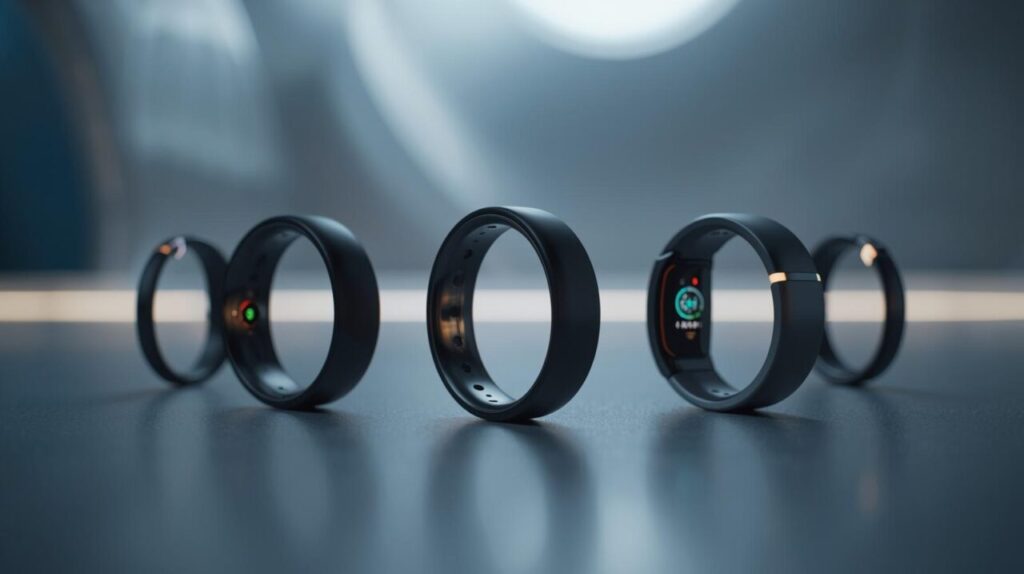
Future Of Wearable Technology In Healthcare
India’s healthcare system has long grappled with structural challenges: overburdened hospitals, shortage of medical professionals, and stark urban-rural divides. Chronic diseases like diabetes and hypertension are rising, particularly in semi-urban and rural areas, where access to adequate care remains elusive. Healthcare in India is moving away from being hospital-centric and towards becoming person-centric. This is happening due to data, that is increasingly generated and interpreted by smart devices. These devices are no longer passive recorders of information; they actively analyse patterns, predict risks, and deliver personalised insights.
AI-powered devices are emerging as the bridge that links distant homes to high-quality care. These tools ranging from wearables and CGMs to smartphone-based diagnostics that enable continuous monitoring, early detection, and timely intervention. Critically, they adapt to local diets, environmental conditions, and individual routines, making them uniquely suited for everyone. This helps people take charge of their health in ways that were previously unimaginable.
Table of Contents
The urgency of personalisation
India faces persistent healthcare gaps. Travel costs, long waiting times, and uneven access make it clear that personalisation is not a luxury in India it is a necessity. Personalised healthcare ensures that resources are targeted where they are most needed. It allows for proactive management ensuring that interventions happen at the right time. AI-powered devices form the this shifts by capturing real-time data, interpreting it intelligently, and nudging users towards healthier decisions. For Indians, this is not just about convenience; it is about bridging fundamental gaps in access and quality of care.
Wearables as health companions
Wearables such as smartwatches, fitness bands, and rings now track heart rate, oxygen saturation, movement, and sleep cycles. AI enriches this data by comparing it against personal baselines and spotting early deviations. A small rise in resting heart rate with poor sleep may signal illness. AI connects these patterns and turns raw readings into guidance.
For Indians, context matters. Air pollution in Delhi differs from humidity in Kerala. AI adapts to these realities. It adjusts advice to fit climate, diet, and daily routines. Thus, a wearable becomes more than a tracker, it becomes a health coach that speaks to local conditions.
Also Read : Should We Trust Fitness Gadgets Like Smartwatches, Smart Rings and Fitness Trackers
Smarter diabetes management
Diabetes burdens India heavily. Continuous Glucose Monitors (CGMs) now transform self-care. These sensors track glucose in real time and feed readings into AI systems. AI shows how specific foods or activities affect an individual. Instead of vague rules like “avoid sugar,” users receive personal advice: a certain breakfast may spike glucose while another stabilises it.
Large-scale efforts highlight this, The Research Society for the Study of Diabetes in India screened one million rural patients with BP monitors and CGMs. At MNNIT Prayagraj, researchers created a non-invasive sensor costing less than ₹500. Such innovations bring personalisation within reach of lower-income groups.
Preventive cardiovascular care
Heart disease remains a leading cause of death in India, yet many people delay check-ups due to cost, distance, or lack of awareness. Affordable AI-powered devices are now bringing cardiac screening into the home. Single-lead ECG machines connected to smartphones can flag irregular heart rhythms, while smartwatches equipped with photoplethysmography can screen for anomalies that may require medical attention.
These tools do not replace cardiologists but act as an early warning system. They help identify risks that can then be confirmed through clinical tests. By guiding users to take measurements correctly and reducing errors caused by stress or improper technique, AI ensures better data quality. This shift makes preventive heart care accessible to millions who might otherwise never undergo screening until it is too late.
Tackling respiratory health
Pollution worsens respiratory illness in Indian cities. AI-powered spirometers and smart inhalers help patients track lung function at home. They log inhaler use, detect patterns, and link flare-ups to smog or pollen levels. AI alerts patients to risks before attacks worsen. It may suggest avoiding outdoor activity or adjusting medication timing. When aggregated, this data also informs schools and workplaces about when to protect larger groups.
Maternal and women’s health
Pregnancy care in rural areas suffers from limited gynaecologist access. AI-powered tools such as BP monitors, fetal Dopplers, and weight scales generate pregnancy risk scores. These scores flag complications early and ensure timely referrals. Beyond pregnancy, women benefit in managing PCOS and menstrual health. AI analyses glucose, hormones, and lifestyle to craft tailored advice. This builds holistic care that respects individuality instead of relying on one-size-fits-all guidance.
Cameras as diagnostic tools
Smartphone cameras double as diagnostic devices. AI models read retinal scans for diabetic retinopathy, analyse skin lesions, or even assess oral cavities for precancerous changes. These tools make specialists more accessible to rural India, where dermatologists or ophthalmologists remain scarce. A simple photo, taken at home, can trigger an early referral.
Supporting elder care
India’s ageing population needs solutions for safe, independent living. AI devices now track daily routines, sleep cycles, and movement. They detect falls, monitor hydration, and flag unusual patterns. Families receive alerts only when necessary, reducing false alarms. Elders benefit from reminders for medication or hydration and can link directly to teleconsultations. This reduces hospital visits and preserves independence.
Closing the loop
Data alone does not solve problems; action does. AI-powered ecosystems in India close this loop. Devices detect health changes. Apps explain results. Infrastructure links patients to teleconsultations, lab tests, and payments. For example, if blood pressure rises, the app can schedule a call with a doctor and arrange a home test. This loop prevents delays and keeps healthcare continuous, not episodic.
Building trust and regulation
AI devices must earn trust. False positives or negatives can harm patients. Clinical validation is essential. Models must adapt to Indian populations, and companies must publish transparent studies. Regulation is evolving. The Medical Device Rules 2017 classify many devices, yet new AI tools often sit in grey zones. To address this, the Health Ministry with NITI Aayog launched an AI regulatory sandbox in 2024, allowing controlled real-world trials while monitoring privacy, bias, and safety. Privacy is equally critical. Users must control data access, with clear consent and revocable permissions. Without trust, adoption will falter.
Affordability and accessibility
Cost is a major barrier. While device prices fall, they remain high for many families. Subscription models, employer programmes, and insurance coverage can spread expenses. Public health schemes may subsidise devices for diabetes or maternal care. Accessibility also demands design suited to India; devices must work offline, support local languages, and simplify interfaces for elders or people with low literacy. AI-powered voice guidance can bridge these gaps.
Changing roles for providers
Doctors are not replaced but empowered. AI filters data, highlights risks, and reduces overload. Nurses and health coaches gain importance in guiding patients with device-generated insights. New workflows are needed, with clear liability frameworks and transparency about AI’s limits. Integrated well, these devices reduce workload and allow doctors to focus on complex cases.
Final Thoughts : Towards a healthier future
The impact of AI-powered devices on healthcare in India is becoming increasingly visible. They enable earlier detection of diseases, more precise management of chronic conditions, safer pregnancies, and better elder care. More importantly, they make healthcare continuous rather than episodic, weaving it into the fabric of daily life.
The future of Indian healthcare lies not just in hospitals and clinics but in the devices people wear, use, and interact with every day. With strong guardrails for privacy, affordability, and clinical validation, these devices have the potential to reshape health outcomes on a national scale. What begins as a small nudge on a wrist or a notification on a phone can prevent emergencies, reduce costs, and ultimately build a healthier population.
Ends.
About The Author

